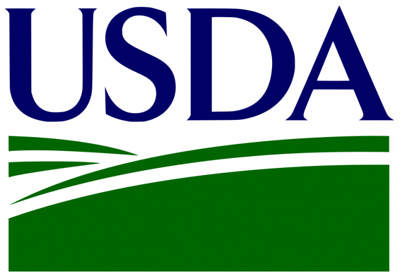Jul 2, 2020CFAP payments to specialty crop producers ‘significantly behind’ others
The Coronavirus Aid, Relief, and Economic Security Act provided $9.5 billion in funding (approximately 0.48% of a package totaling nearly $2 trillion) to the Office of the USDA Secretary to craft a financial support package for producers impacted by COVID-19-driven supply, demand and revenue disruptions.
Combining existing Commodity Credit Corporation funding of $6.5 billion with the $9.5 billion appropriated, the secretary created a $16 billion Coronavirus Food Assistance Program to provide direct payments to farmers and ranchers to partially offset COVID-19-related losses for livestock, dairy, specialty crop and non-specialty crop producers, i.e., Reviewing Coronavirus Food Assistance Program Details.
USDA data reveals that as of the end of June nearly one-third, or $4.85 billion, of the $16 billion in CFAP assistance has been paid to livestock, dairy, crop and specialty crop producers. Of that total, $2.4 billion, more than 50%, has been paid to livestock (cattle, hog and lamb producers), $1.3 billion, or 26%, has been paid to non-specialty crop producers, $1 billion, or 22%, has been paid to dairy producers and $113 million, or 2%, has been paid to specialty crop producers.
CFAP Payments by State
Of the nearly $4.9 billion in CFAP payments made to agricultural producers, a majority of the assistance went to producers in the Midwest. Iowa leads the nation with more than $500 million in CFAP support, followed by Nebraska at $345 million, Michigan at $324 million and Minnesota at $310 million. Ten states have received $2.9 billion, or nearly 60% of total CFAP payments made to date. Figure 1 highlights total CFAP payments by state through June 29.






CFAP payments for specialty crops
At $113 million, CFAP payments made to specialty crop producers are significantly behind payments made to livestock and non-specialty crop producers. Given that USDA’s CFAP cost-benefit analysis projected total specialty crop payments at $2.4 billion, total payments are likely to accelerate in the coming weeks. Another contributing factor is the exemption of many specialty crops from category 1 consideration, i.e., a 5% or more price decline. Comments on the Notice of Funding Availability, which USDA is reviewing now, could spur the department to allocate additional CFAP resources for specialty crops.
Payments to producers of specialty crops, i.e. fruits and vegetables, are currently the highest in California and Florida, followed by several Southwestern states, Georgia, Idaho, Pennsylvania, Michigan and New York. Total payments are the highest in California at $44 million followed by Florida at $30 million. Figure 8 highlights total CFAP payments to specialty crop producers through June 29.






While total CFAP payments are highest in California and Florida, the average CFAP payment per application is the highest in Arizona at $170,000 per application, followed by Montana at $158,000 per application and Florida at $156,000 per application. The average payment across the U.S. is $36,140 per application. Figure 9 highlights average CFAP payments per specialty crop application.






What’s in the CARES Act for Food and Agriculture.
CFAP Payments for Non-Specialty Crops
Non-specialty crop producers have received $1.3 billion, or 26%, of the $4.9 billion in CFAP payments made through June 29. Payments to non-specialty crop producers, e.g., corn, soybeans, cotton and wheat, are highest in the Midwest (Reviewing the CFAP Payment Formula for Non-Specialty Crops), with Iowa leading the nation at $231 million, followed by Illinois at $149 million, Nebraska at $137 million and Indiana at $69 million. Figure 4 highlights total CFAP payments to non-specialty crop producers through June 29.






While total CFAP payments are highest in the Midwest, the average CFAP payment per application is currently the highest in several Southeastern states and Arizona. Mississippi has an average CFAP payment of $22,000 per application, followed by Arizona at $16,000. Georgia, Alabama, Louisiana and South Carolina all have average CFAP payments of more than $10,000 per application. The average payment across the U.S. is $7,189 per application. Figure 5 highlights average CFAP payments per crop application.






Currently, nearly $5 billion in CFAP direct payments have been made to livestock, crop, dairy and specialty crop producers. Farmers and ranchers have until August 28 to complete their CFAP application. The distribution of payments follows closely the concentration of livestock, crop, dairy and specialty crop production. As expected, , farm-level payments are the highest in areas with producers with larger production volumes.
The distribution of payments, total payments and payments per application will change in the coming months as USDA receives and processes more CFAP applications. Future Market Intel articles will update this analysis each month (July and August) until the CFAP application and payment process concludes.
What’s in the CARES Act for Food and Agriculture.
– John Newton, chief economist, American Farm Bureau Federation















